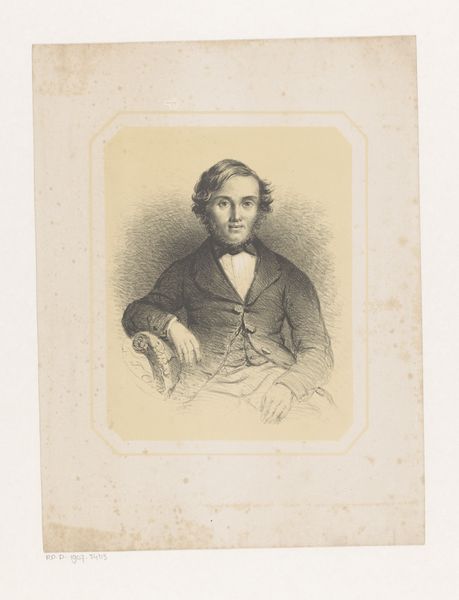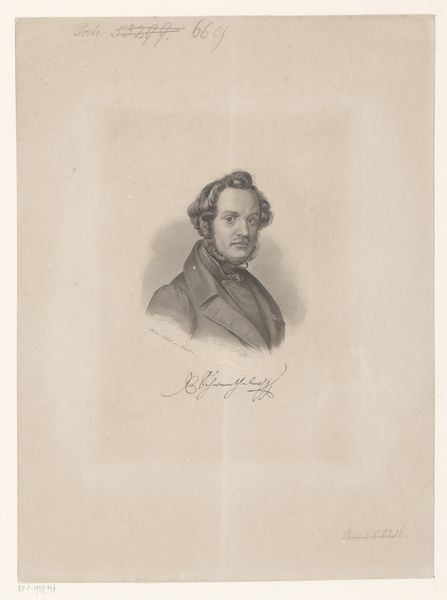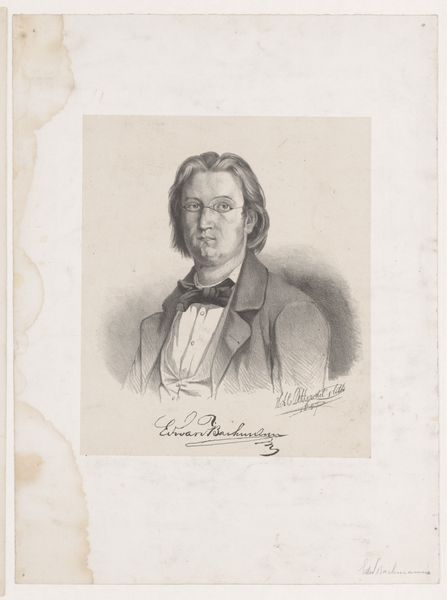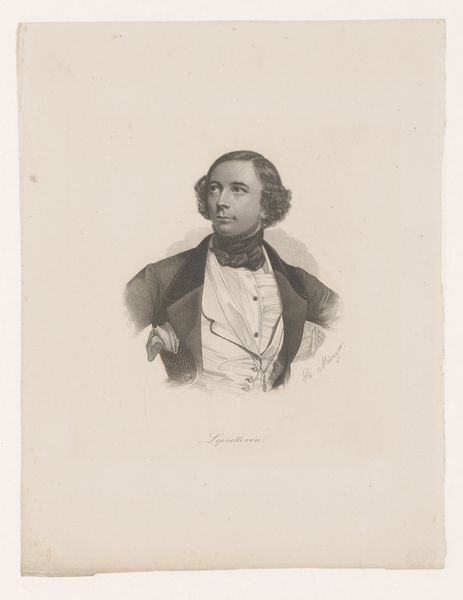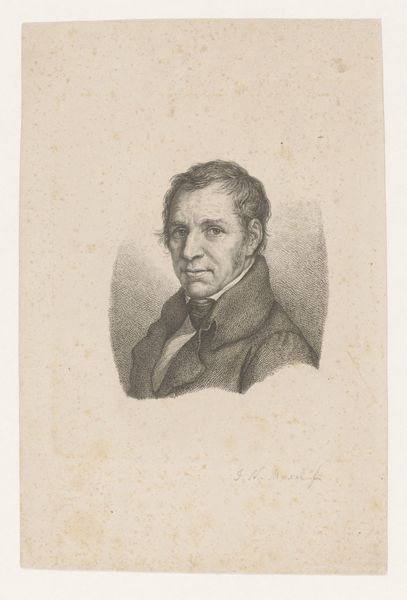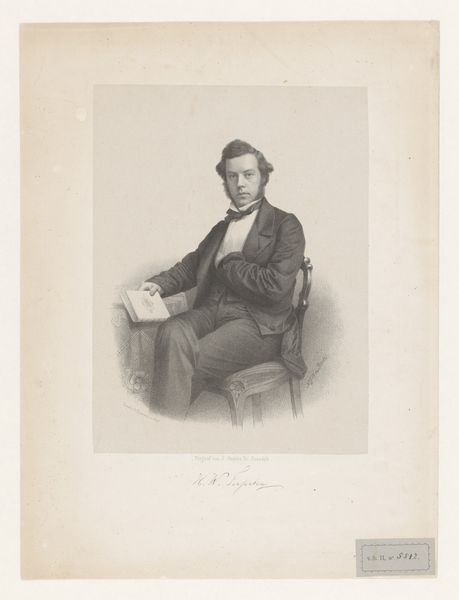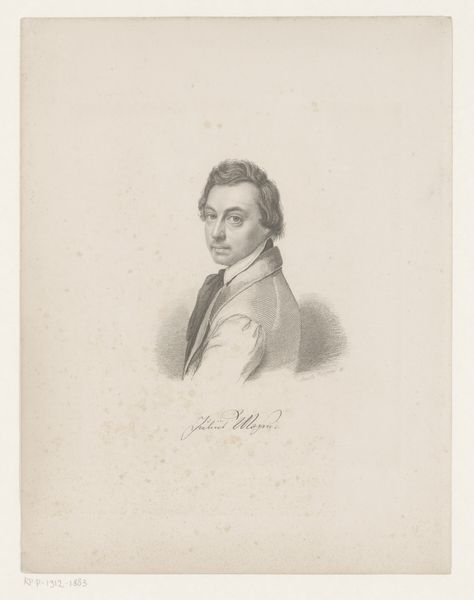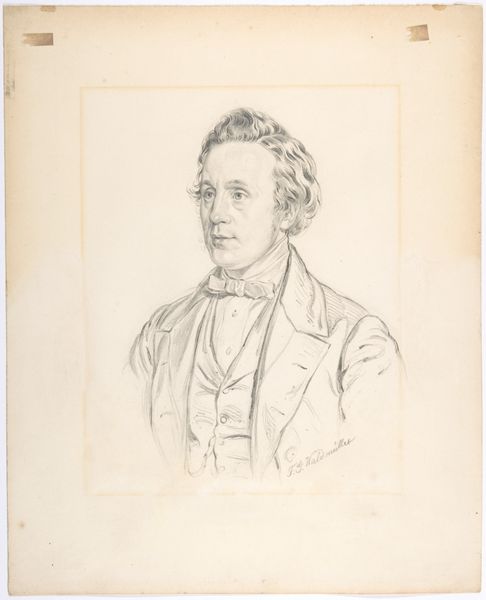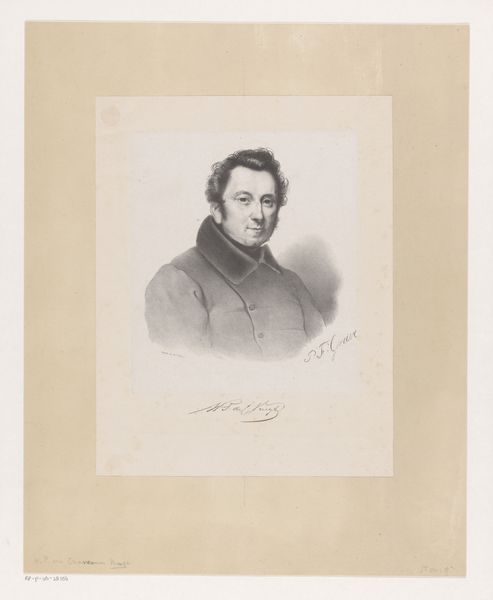
Dimensions: height 210 mm, width 166 mm
Copyright: Rijks Museum: Open Domain
Curator: Here we have Hugo Bürkner's "Portret van Johann Gustav Droysen" created in 1856. It's currently held at the Rijksmuseum. Editor: The immediate impression is the intensity of the gaze, wouldn’t you say? It's stark. The use of graphite gives it a soft yet precise feeling, despite its serious tone. Curator: Precisely! The technique employed by Bürkner—pencil on paper—speaks volumes about the art production of the period. Drawings like these allowed for wider dissemination through reproductions and served different social functions, moving between the private sphere and more public spaces. What do you make of it within the broader landscape of Romantic portraiture? Editor: Romanticism glorified the individual. So here, we see an attempt to capture Droysen's intellectual prowess, his contributions to history. The slightly upward angle, for example, suggests a sense of importance. It’s all part of constructing a specific image for posterity. Were there particular patronage networks or academic circles that fostered artists like Bürkner? Curator: Absolutely, artists depended on specific intellectual circles for visibility, commissions, and the legitimization of their status. Bürkner used drawing as a fundamental way of constructing value, working in reproducible formats to broaden accessibility. These portraits, circulating in academic circles, served very practical functions beyond aesthetics. It made him and his patron known, visible in their cultural ecosystem. Editor: It's fascinating how art and social standing are intrinsically linked here. The politics of imagery indeed. A drawing like this, in that specific context, isn't just about artistic talent but about constructing social narratives and maintaining hierarchies. Curator: That's right. And when we delve into the materials, think about graphite’s industrial origins versus the "high art" status sought for these images...it starts to question the art's relationship with labour and societal hierarchies in a new way. It makes the piece more fascinating for me. Editor: It offers so much depth, thinking about the layers of meaning imbedded in such an unassuming format. Curator: Indeed, seeing past the gaze to understanding what that gaze *does*.
Comments
No comments
Be the first to comment and join the conversation on the ultimate creative platform.
